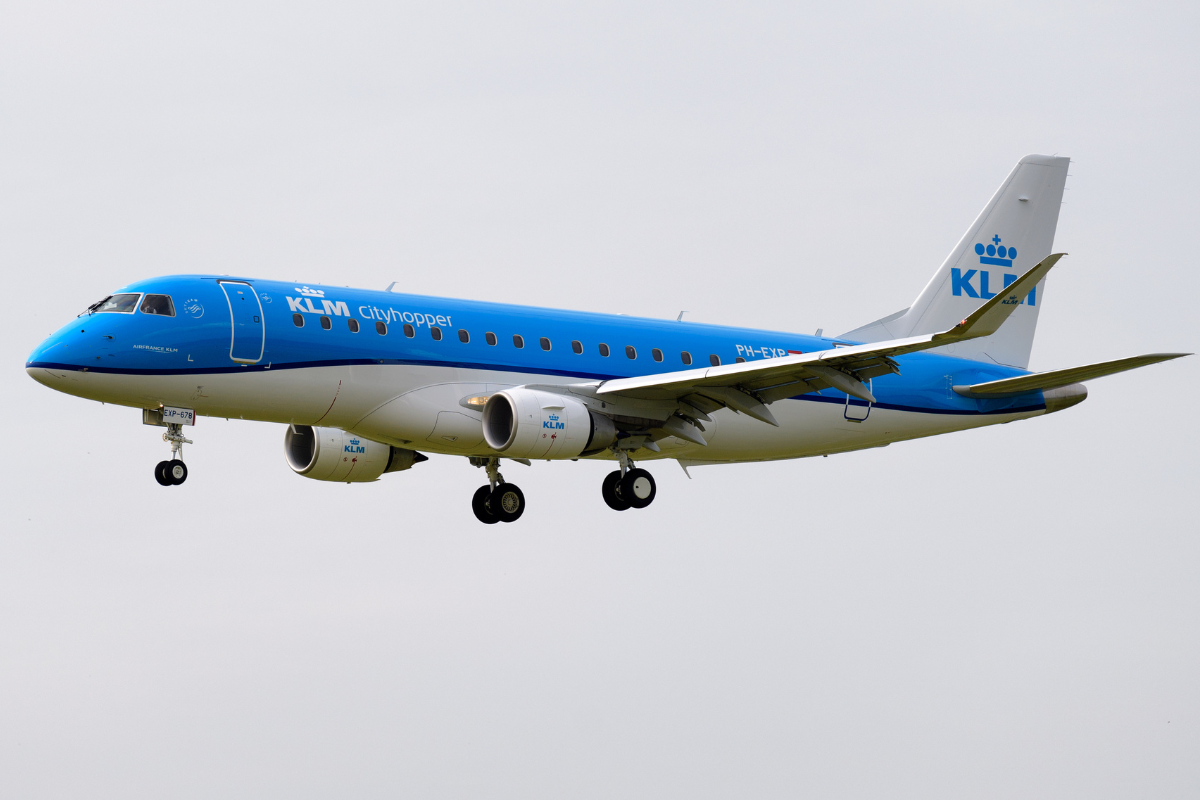
A flight attendant jumped into action and helped pull a pilot away from the controls of a commercial airliner and started administering First Aid after he suddenly collapsed immediately after takeoff during a flight from Dublin, Ireland, to Amsterdam, Netherlands.
The incident took place in October 2022, although Irish aviation accident investigators have only just released their final factual report into the events that unfolded aboard KLM Royal Dutch Airlines flight KL934, which details a textbook example of flight attendant emergency training.
The AAIU says that the First Officer of the KLM Cityhopper Embraer ERJ-175 regional jet with as many as 88 passengers onboard “occurred with minimal warning” just as the aircraft was taking off from Dublin Airport.
Investigators have praised the actions of the Captain and one of only two flight attendants onboard the jet who not only had to deal with an incapacitated pilot but also a bird strike as the plane made an emergency return back to Dublin.
After the First Officer suddenly slumped over, the Captain was forced to bang on the cockpit door to alert the flight attendants to what was going on. The flight attendant then quickly pulled the pilot away from the controls, moved his seat backwards and then fitted a special oxygen mask for pilots.
While the Captain concentrated on getting the plane back to Dublin, the flight attendant took responsibility for updating the passengers on what was going on, staying in the cockpit to monitor the condition of the First Officer until just 1,000 feet before landing.
The airline has specific instructions on what flight attendants should do in the event of a so-called ‘pilot incapacitation’ but with just two crew members in the cabin, KLM has never provided guidance on whether flight attendants should stay in the cockpit or return to their jumpseat in the case of an emergency in the cabin.
Forced to fly the plane solo, the Captain declared a Mayday and made an emergency return to Dublin. Just 100 feet from touchdown, the aircraft then encountered a flock of birds that struck the nose of the plane.
Thankfully, the Captain was able to safely land the aircraft despite deteriorating weather conditions.
Emergency medical responders were waiting to meet the aircraft who determined that the First Officer was experiencing low pressure, which had been brought on by a possible lack of food and water.
Matt’s take
Although pilot incapacitation is rare, it’s considered that much of a risk that flight attendants routinely have to train how to safely get a collapsed pilot away from the flight controls and administer First Aid.
Flight attendants learn how to operate the pilot seats and how to properly fit full-face oxygen masks to pilots as part of regular ‘pilot incapacitation’ drills.
Depending on the circumstances, they may then work to get the pilot out of the cockpit to administer more advanced First Aid while assisting the remaining pilot with tasks such as communication.
Mateusz Maszczynski honed his skills as an international flight attendant at the most prominent airline in the Middle East and has been flying ever since... most recently for a well known European airline. Matt is passionate about the aviation industry and has become an expert in passenger experience and human-centric stories. Always keeping an ear close to the ground, Matt's industry insights, analysis and news coverage is frequently relied upon by some of the biggest names in journalism.







